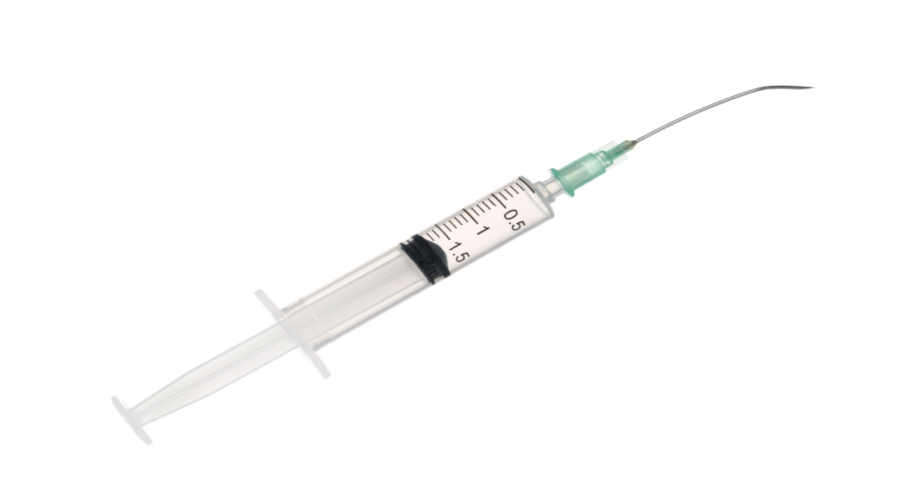Inside: Your independent pharmacy lives or dies by its prescription volume. Discover why you’re not getting the volume you want and how to increase prescription volume.
Prescription volume can decrease or stagnate for many reasons. Anything from a lack of new patients to a competitor moving in across the street.
When prescription volume levels stay flat, it’s likely due to an internal problem in the pharmacy that needs adjustment.
Take a look at your pharmacy to spot the problems plugging up your prescription volume. And discover how solving those problems can substantially increase prescription volume.
5 Problems Plugging Up Your Prescription Volume (And How to Increase Prescription Volume by Solving Them)
Don’t let these problems get in the way of your independent pharmacy’s profits.
Problem 1: Losing to your competitors
The most common reason for low prescription volume is low patient volume.
And one common reason pharmacies lose patients (sometimes without realizing it) is because a competitor scoops them up.
Patients have so many choices of pharmacies today. And just because an independent pharmacy is near them, doesn’t mean they’ll use it. Today, people can get anywhere quickly and they have easy access to national chain pharmacies and big box stores.
It’s too difficult in this landscape to keep the status quo.
If your prescription volume isn’t where you want it, your competitors are winning.
How to increase your prescription volume:
The more value you provide to your patients, the more reasons they’ll have to choose your pharmacy over the one down the street.
And for patients today, value looks like clinical services. Not just prescriptions.
For example, patients under 40 are almost 50 percent more likely to rely on non-traditional modes of primary care delivery than on a primary care physician.
So, the more provider-level services you offer, the more people will want to use your pharmacy.
Here are some service offering ideas:
- Compounding
- Diabetes care
- Health screenings
- Immunizations
- Medication management
- Pet medications
- Pharmacogenomics
- Point-of-care testing
- Lab testing
- Smoking cessation
- Specialty pharmacy
- Transitions of care
- Travel health
- Wound care
Also make sure to meet the criteria patients look for in a pharmacy.
The most important factors patients look for when choosing a pharmacy:
- Accurate fills
- Convenience
- Short wait times
- Superior customer service
Find a way to differentiate yourself in each of those areas to beat the competition.
Problem 2: Poor third party relationships
Third party payers like pharmacy benefits managers (PBMs) control much of your pharmacy’s prescription volume.
As you know, they decide whether you have the “privilege” of being in their network. Those decisions have huge consequences for your prescription volume.
Patients receive better coverage at in-network pharmacies. Going outside of the network can cost them a lot more money, even hundreds of dollars.
Which means no matter how much they love your independent pharmacy, they’ll find another one in their network. And if they’re under the canopy of a large third party payer, you could miss out on hundreds to thousands of patients.
How to increase prescription volume:
Sadly, you’re unlikely to have much negotiating leverage with PBMs own your own. Even if you own more than one pharmacy.
Some of these companies insure tens of thousands of people. They know you need them more than they need you.
The best way to get into their networks without significantly compromising your margins is to partner with a company that specializes in third party negotiations. And that can negotiate better PBM contracts for you.
Pharmacy services administration organizations (PSAOs) advocate for pharmacies with PBMs and other third party payers. Join a PSAO to help manage your third party reimbursements.
Recommendation: Pharmacy Providers of Oklahoma (PPOk) provides efficient, effective, cost-controlled pharmacy services administration organization (PSAO) services for independent pharmacies.
Problem 3: Poor workflow
If your pharmacy has more demand than it can keep up with, you have a good problem.
But it’s still a problem. You’re not filling as many scripts as you could.
And you could lose prescriptions because patients who have to wait will take them somewhere else.
Even if you’re overflowing with prescription orders, it’s still possible for you to increase your prescription volume.
How to increase prescription volume:
The only way to boost script count when you have more demand than you can meet is to improve your pharmacy workflow. (Or, if demand is high, maybe it’s time to expand.)
If you streamline your workflow, you can dispense more prescriptions faster.
Any speed bumps in your system, from the moment you receive prescriptions to the moment you hand them to the patient, can stall your workflow.
And, any improvements you make to those areas will increase your volume.
Start improving your workflow by finding inefficiencies. Then, carve out time to find solutions. Every pharmacy is different. And every pharmacy needs solutions tailored to its particular space, equipment, and staffing.
But pharmacies tend to make one common workflow mistake. Not having clearly articulated and written standard operating procedures. For an example of a workflow that works, see how one independent pharmacy created a system designed around stations.
Problem 4: Poor patient adherence
When patients don’t adhere to their medication regimen, they don’t refill their prescriptions on time—or at all. Which stalls your prescription volume.
The better patients adhere to their medications, the more prescriptions you’ll fill.
How to increase prescription volume:
One proven strategy that’s working wonders for patient adherence is the appointment-based model (ABM).
While a simple medication synchronization program is good too, the ABM takes it a step further. Instead of simply syncing up medication refills, in an ABM the pharmacist sets a time to sit down with patients and go over their needs. Talking through patients’ medications and addressing their health needs helps improve adherence. (Giving them all their medications at once helps, too.)
The ABM also helps with pharmacy workflow.
Other strategies to increase patient adherence include:
- Offer adherence packaging and delivery services
- Send patients refill and pickup reminders
- Use health apps to track adherence
- Build relationships with patients
Also, many patients continue to take their prescriptions after they expire. Remind your patients of the dangers of consuming expired drugs and encourage them to refill their prescriptions on time.
Problem 5: Poor prescriber relationships
Although prescribers don’t typically determine where patients fill their scripts, they can recommend a pharmacy to patients who don’t have one already.
Even if one physician recommends your pharmacy to one patient, your script count could jump depending on the patient.
For example, a patient with a lifelong chronic condition will gain you substantial prescription volume for the long term.
How to increase prescription volume:
- Create collaborative partnerships with prescribers
- Create a mutual referral program
- Participate in professional networking events to meet and get to know prescribers
- Welcome new physicians in the community through lunches or meet-and-greets
- Invite prescribers to your pharmacy events
- Give thoughtful gestures on the proper holidays
Read next: 8 Ways Pharmacists Can Strengthen Relationships With Physicians
Fix these common problems and dramatically increase the prescription volume at your independent pharmacy.
A Member-Owned Company Serving Independent Pharmacies
PBA Health is dedicated to helping independent pharmacies reach their full potential on the buy-side of their business. Founded and owned by pharmacists, PBA Health serves independent pharmacies with group purchasing services, wholesaler contract negotiations, proprietary purchasing tools, and more.
An HDA member, PBA Health operates its own NABP-accredited secondary wholesaler with more than 6,000 SKUs, including brands, generics, narcotics CII-CV, cold-storage products, and over-the-counter (OTC) products — offering the lowest prices in the secondary market.












